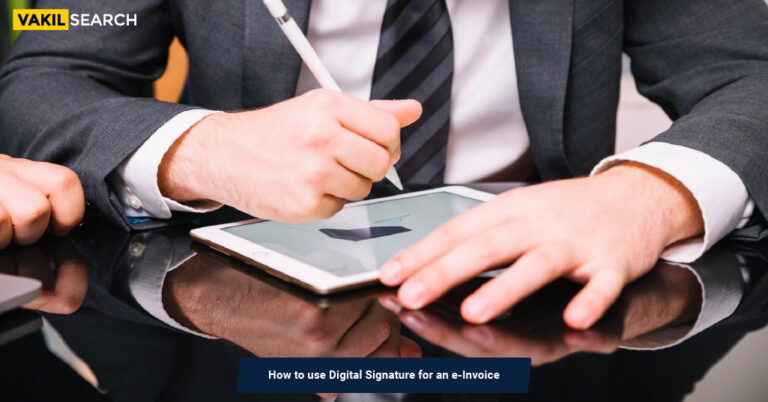Adding digital signature to your mails can benefit your business in multiple ways. Learn to create and add digital signatures to your mails.
Digital Signature How To Create Add It To Your Emails : As more business is done online, transactions and agreements once signed on paper and physically delivered are gradually being replaced by totally digital papers and workflows. Adding digital signature to your mails and other digital documents can ensure advanced security and safety of your data. To conduct daily transactions, an increasing number of people and companies are switching from physical documents to digital ones. We are preserving the environment and conserving the planet’s resources by minimizing our reliance on paper papers. The legitimacy and authenticity of a digital document are ensured by adding digital signature to your mails and digital documents.
An encrypted, electronic stamp of authentication known as a “digital signature” is applied to digital material, such as messages. The digital signature confirms the message’s integrity. By guaranteeing that the information was written by the signer and was not changed, this signature establishes the legitimacy of the company that produced the digital signature. Any modification to the signed data renders the entire signature invalid.
A digital signature is not the same as the signature you typically send along with an email, and an email signature can only be sent by the person whose digital ID was used to sign it. Read this blog to know how to create digital signature for email.
Why Is a Digital Signature Necessary?
Digital signatures are crucial because they can offer authentication details about the communication’s source and guarantee end-to-end message integrity. The digital signature must be a component of the application data such that it is generated when the message is created for it to be most useful. When the communication is received and processed, the signature is then confirmed. You have the option of signing the full message or only selected passages. If a portion of the message needs to be changed before it is delivered to the customer, you can opt only to sign that portion. In this case, if the entire message was authenticated, even a single modification to the message invalidates the entire signature. You can establish partial signatures for a document by adding a reference and an ID property to each element you want to sign.
Benefits of a Digital Signature
The fundamental advantage of digital signatures is security. Digital signature Certificate Online have security features that ensure documents aren’t altered and authentic signatures. The following security techniques and features are applied to digital signatures:
Passwords, codes, and personal identification numbers (PINs): These are used to validate a signer’s identity and to certify that their signature is genuine. The most frequently utilized techniques are email, username, and password.
Asymmetric encryption: It utilizes a public key technique that combines encryption and authentication using both private and public keys.
Checksum: The total of the right digits in a piece of digital data is represented by a long chain of numbers and letters. This string can be compared to find faults or changes in the digital data. Data fingerprints are created via checksums.
Periodic redundancy review (CRC): In digital networks and storage devices, a verification feature and error detecting code are utilized to find modifications to raw data.
Validation by the certificate authority (CA): By accepting, authenticating, issuing, and maintaining digital certificates, CAs serve as trustworthy third parties and provide digital signatures. False digital certificates can be prevented by using CAs.
How to Create a Digital Signature?
The stages involved in creating a digital signature are as follows:
- The digital signature is created when the sender uses their private key to encrypt the message digest after computing it (using an algorithm like RSA or SHA1) to create the message digest. A message may have several signatures and its various formats attached, each referencing various (or even overlapping) elements of the message
- The sender sends the message together with the digital signature
- The message digest is generated once the receiver decodes the digital signature using the sender’s public key
- The receiver generates a message analysis from the received message data and confirms that the two messages are identical. The message is both intact and legitimate if these digests agree.
Digital signature technology makes it simple and secure to sign papers electronically. In addition to offering a platform for signing and sending documents electronically, they collaborate with the necessary certificate authorities to offer reliable digital certificates. The type of information you could be asked to supply depends on the certificate authority you’re using. There may also be established guidelines and procedures regarding who should receive and how to transmit documents for signature. When you obtain a document through email that needs to be signed, you must first authenticate by the certificate authority’s rules before signing the document online using a form.
Conclusion
Your manager no longer needs to sign the required documents after returning from vacation or a conference. With the stroke of a mouse, documents and contracts can be signed off on, saving businesses time and money. Only the legal digital signatures: https://www.digitalindia.gov.in/ that were issued to you may be used, and use of a digital signature from someone other than the recipient is prohibited. The most common situations when digital signatures are utilized are when people want to streamline and modernize a protracted, manual procedure involving many physical documents.
FAQs
1. What does a public key infrastructure imply?
A collection of tools called public key infrastructure (PKI) is needed to manage your digital signatures securely.
2. What is meant by a certificate authority?
Organizations well-known for ensuring digital certificates and key security are known as a certificate authorities.
3. What are the digital signature's three primary goals?
Integrity, non-repudiation, and authenticity are three crucial information security objectives that digital signatures meet.
4. Where is a digital signature mostly used?
The majority of cryptographic protocol suites include digital signatures as a basic component. They are frequently used for financial transactions, software distribution, contract management systems, and other situations where it is crucial to identify forgery or tampering.
Also Read,










